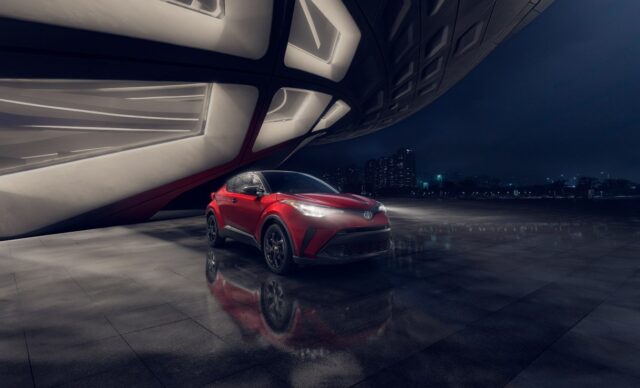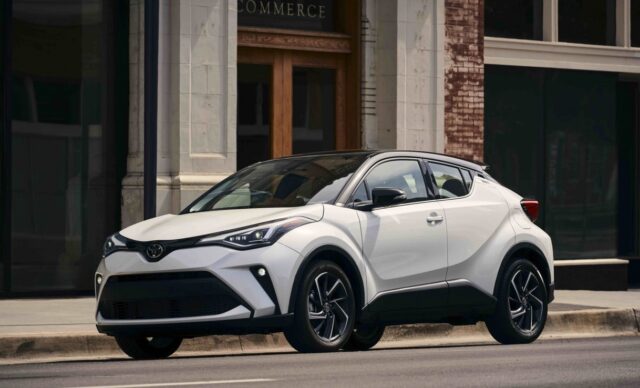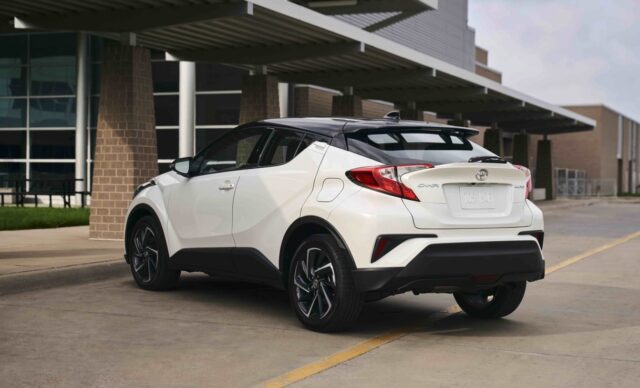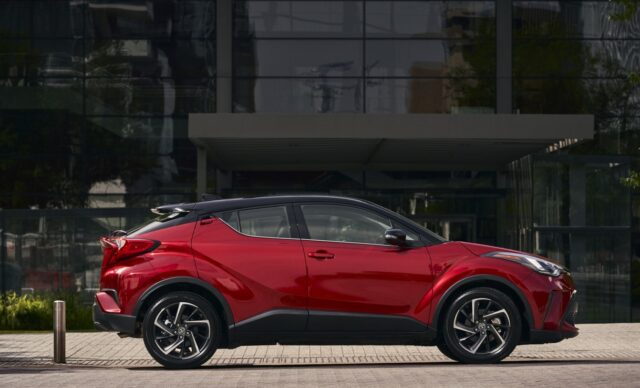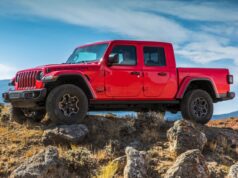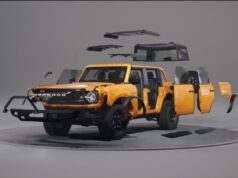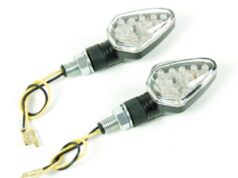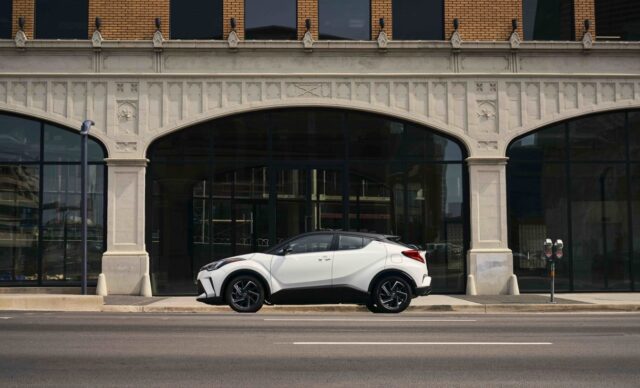
Passenger vehicles face continuous evolution, changing to meet new standards of safety, consumer needs, and in recent years, the need to cut down on carbon emissions for the sake of the environment. But the auto industry has also seen a massive shift in body style, with families moving away from compact sedans, hatchbacks, and station wagons towards a new breed of machine called the crossover: read more about these vehicles, like the Toyota C-HR here. Brands like Ford have gone so far as to cut production of their traditional body styles wholesale in a bid to focus exclusively on trucks and SUVs. But why has the market shifted so suddenly? What makes a crossover so spectacular, and is the craze justified?
Unibody Construction: SUV Benefits Without The Body On Frame Compromise
Arguably the biggest technical drawcard to the modern crossover is the way in which it is built. Traditional SUVs always followed a simplistic approach towards their manufacture utilizing something called ladder-frame or body-on-frame construction. They regularly shared a chassis with pickup trucks that was a basic framework with all mechanical elements included. The body itself was then crafted and mounted to the frame via rubberized bushings. On the one hand, it enabled manufacturers to create numerous vehicles underpinned by a single platform, but on the other, the body-on-frame technique resulted in cars that had poor torsional rigidity, were riddled with squeaks and rattles, and didn’t handle particularly well. The bodies would shuffle atop the frame, too, leading to uneasy responses to steering inputs and reducing overall comfort.
But crossovers are built using unibody construction – a phrase that’s short for ‘unitized body’. This construction style has been the standard for standard passenger cars since the early 1940s, whereby the body of the car itself is a part of the chassis framework. By creating a more three-dimensional frame, torsional rigidity is vastly increased, resulting in better handling. More than this, unibody construction enables the chassis to act as a safety cell – dissipating the forces of an impact to enhance occupant safety.
Suspension systems integrate better into a unibody vehicle from a comfort perspective too, and without rubber bushings between the body and framework, the overall drive is more cohesive. The result is a vehicle that handles better, is safer, and feels more comfortable. Of course, all of these benefits have been present in traditional sedans and hatchbacks, but crossovers combine the best of multiple worlds for many buyers, and unibody construction is key to that.
High Ride Height: As Much About Visibility As It Is About Isolation
The most common reasoning given as to why people are in the market for a crossover instead of a sedan or hatchback is the high ride height. According to most buyers, there’s a sense of security from having a commanding view of the road ahead, and the higher vantage point means they can easily see impending obstacles such as potholes before it’s too late. The extra suspension travel also means bumps in the road are taken in better stride, and should the need arise to drive down a dirt path or climb a streetside curb, the crossover is better equipped to handle such a task.
But that’s simply the placebo – the reasons we create in our own minds to justify the choice. The reason we feel safer in a crossover actually comes down to a few other things. Crossovers afford a high seating position which gives us the sense of being above any trouble going on beneath us. Instead of sitting lower than everyone else in traffic where we’re fearful of not being seen, we’re easily spotted when we’re sitting high up.
A stronger subconscious process that contributes towards the sensation of safety is the reduced sense of speed. Modern cars are capable of going much faster, much more easily than they could some 20 or 30 years ago. But when you’re elevated away from the road surface, the scenery doesn’t appear to speed past you as quickly. When you combine this perception with more sound deadening to reduce wind noise, more pliant suspension that soaks up bumps so effectively you weren’t aware of their presence, and modern electric power steering systems that simulate feel while actually dampening sensation, the net result is a vehicle that makes speed itself seem far less daunting. Modern crossovers are sensory deprivation tanks that anesthetize us to the sensation of speed.
Choice Is An Illusion, Manufacturers Dictate The Trends
While we wouldn’t go so far as to claim that we’re living in a Matrix-like simulation where we’re living through a pre-programmed existence, much of our perceived choice is actually an illusion. While certain trends may hold some water, such as the manual gearbox dying because an automatic is simply so much easier to live with, the notion that all the market wants is a crossover has been carefully curated over many years by product planners across the globe.
At a time when sedans, hatchbacks, and station wagons ruled the sales charts, it became increasingly difficult for manufacturers to lure new buyers into the brand. In order to create more sales, they needed to target a new audience, which in turn meant creating a new niche. Enter the modern crossover, an SUV in appearance with the comfort and convenience of a modern car or station wagon. Sales were slow to start, but as early adopters bought in, our perception towards these vehicles was changed. Gradually, manufacturers could manipulate perception: if a manufacturer claimed that there wasn’t enough demand for sedans and it had to cut production, many buyers would simply buy what was available – if that was a crossover, then so be it.
All the various benefits have been milked by the world’s automakers to create a sense that the crossover is ‘the last car you’ll ever need’, replete with easy-to-live-with fuel economy, luxurious interiors, comfortable seats, spacious back seats, cavernous cargo bays, and more than enough horsepower on tap to rival even genuine sports cars. You can even opt for various body styles with traditional bodies now complemented by coupe crossovers that imbue a sense of sportiness in an otherwise unsporting vehicle.
We Have To Roll With The Times
It’s not all doom and gloom, however, as the global push towards crossovers means that the development of such vehicles is better than ever before, particularly in the USA where a number of models are developed uniquely for a market that likes big, high-riding machines. With the focus being on crossovers, niche products will be the likes of sports cars, meaning they’ll always have a place in the market.
Things will always change, too, as the industry is in a constant state of flux. Trends move in cycles, and while traditional nameplates may now be discontinued in lieu of new crossovers, this writers prediction is that in 10-15 years time we’ll see these names revived for the resurgence of sedans and station wagons that will capitalize on marketing that hails the benefits of low ride height from a handling and involvement perspective, while also praising the practical benefits of a low center of gravity from an EV battery mounting perspective. The crossover may be dominant now, but in this world, nothing is permanent.

